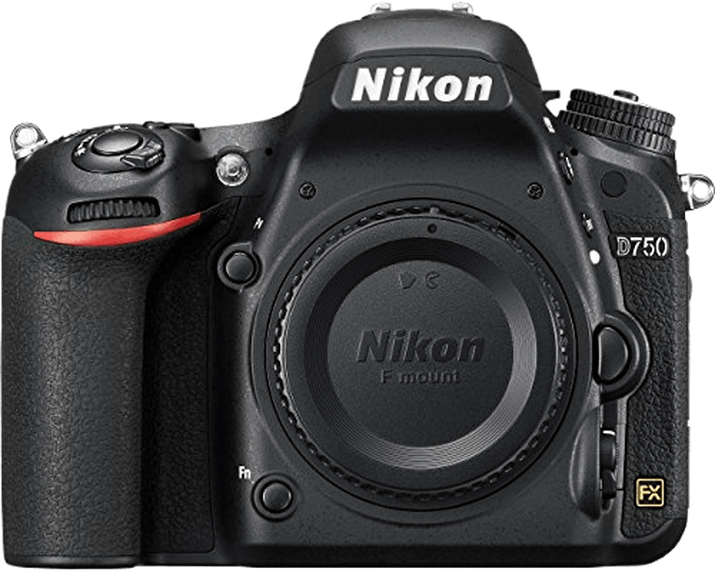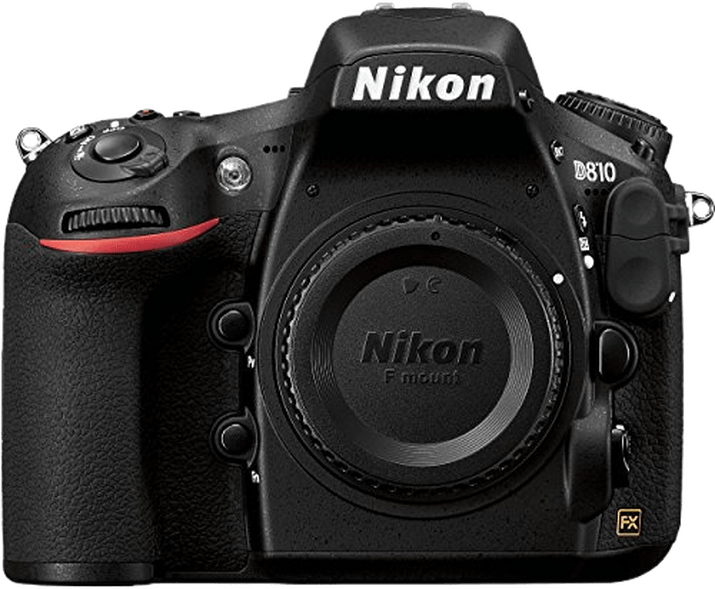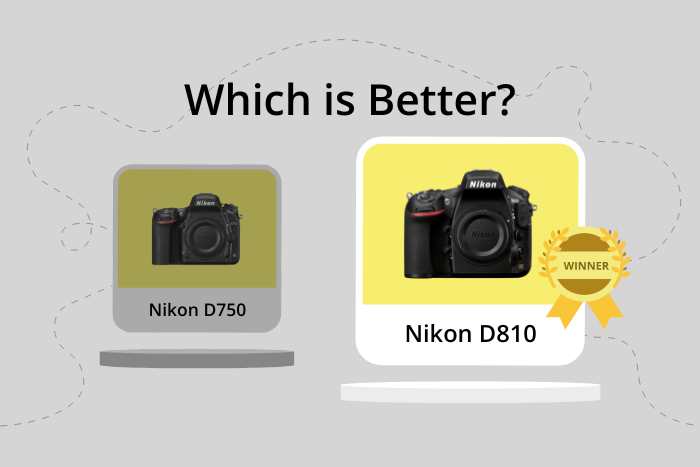Nikon D750 vs D810 Comparison
Nikon D750

Nikon D810

The Nikon D810 emerges as the winner with a score of 72/100, compared to the Nikon D750‘s 68/100. Both cameras share common specifications, such as being DSLRs, released in 2014, and having similar dimensions. The D810 outperforms the D750 with its higher score, which is justified by its advanced features and overall performance. However, the D750 has its advantages, such as being lighter at 750g compared to the D810’s 980g, and having a lower launch price of $2300 versus the D810’s $3300.
Taking these factors into account, the Nikon D810 is the superior camera, but the Nikon D750 offers a more affordable and lightweight option for those with budget and weight constraints.
Nikon D750 vs D810 Overview and Optics
The Nikon D810 outperforms the Nikon D750 in optics with a score of 76/100 compared to the D750’s 71/100. Both cameras share some common specifications, such as the CMOS sensor type, Expeed 4 processor, full-frame sensor size, Nikon F FX lens mount, and lack of image stabilization.
The Nikon D810’s superior optics are evident in its higher megapixel count of 36.3, compared to the D750’s 24.3 megapixels. This difference allows the D810 to capture more detailed images. Additionally, the D810 boasts a higher DXOMARK sensor score of 97, compared to the D750’s score of 93, indicating better overall image quality and low-light performance.
Despite the D750’s lower optics score, it does have an advantage in shooting speed, capturing 6.5 frames per second compared to the D810’s 5 frames per second. This makes the D750 a more suitable choice for photographers who prioritize capturing fast-moving subjects.
When considering the optics of these two cameras, it is clear that the Nikon D810 offers superior image quality and detail due to its higher megapixel count and DXOMARK sensor score. However, the Nikon D750 provides a faster shooting speed, which may be a deciding factor for photographers who require a quicker capture rate. Ultimately, the choice between these two cameras will depend on the specific needs and priorities of the photographer.
Nikon D750 vs D810 Video Performance
The Nikon D810 outperforms the Nikon D750 in terms of video capabilities, scoring 70/100 compared to the D750’s 56/100. Both cameras share some common specifications, including Full HD video resolution, maximum video dimensions of 1920 x 1080, and a maximum video frame rate of 60fps. However, there are differences that make the D810 superior in certain aspects.
The primary advantage of the Nikon D810 is its built-in time-lapse functionality, which the D750 lacks. This feature allows for the creation of stunning time-lapse videos with ease, making the D810 a more versatile option for videographers.
On the other hand, the Nikon D750 does not have any clear advantages over the D810 in terms of video capabilities. Both cameras share the same core specifications, and the D810 has the additional benefit of time-lapse functionality.
In comparing the video capabilities of the Nikon D750 and D810, it is evident that the D810 is the superior choice. The built-in time-lapse functionality sets it apart from the D750, providing additional creative options for videographers. While the D750 is a capable camera, it does not offer any unique advantages in the realm of video when compared to the D810. Therefore, for those seeking a camera with strong video capabilities, the Nikon D810 is the better option.
Nikon D750 vs D810 Features and Benefits
The Nikon D750 and the Nikon D810 both have a feature score of 59 out of 100, making them equal in this aspect. They share several specifications, including a 3.2-inch screen size, a screen resolution of 1,229,000 dots, no touchscreen, no GPS, WIFI capabilities, and no Bluetooth.
However, the Nikon D750 has an advantage over the D810 due to its flip screen feature. This allows for more versatile shooting angles, making it easier for photographers to capture images from various perspectives. The D810 lacks this feature, which may limit its usability in certain situations.
On the other hand, the Nikon D810 does not have any specific advantages over the D750 in terms of features. Both cameras have the same screen size, resolution, and connectivity options. The D810 does not offer any additional features that would make it a better choice than the D750 in this regard.
Based on the comparison of their features, the Nikon D750 stands out as the better option due to its flip screen feature. This added flexibility can enhance the user’s experience and lead to more creative photography opportunities. The Nikon D810, while sharing many specifications with the D750, does not offer any unique advantages that would make it a superior choice. Therefore, the D750 is the more attractive option for photographers looking for a camera with a strong set of features.
Nikon D750 vs D810 Storage and Battery
The Nikon D750 and the Nikon D810 tie in storage and battery with a score of 79/100. Both cameras have two memory card slots and use the same battery type, EN-EL15. Neither camera offers USB charging.
The D750 edges out the D810 in battery life, providing 1230 shots compared to the D810’s 1200 shots. This advantage is minimal but can be beneficial for photographers who need longer shooting sessions without changing batteries.
On the other hand, the D810 accepts an additional memory card format, Compact Flash with UDMA, alongside SD/SDHC/SDXC, giving users more flexibility in choosing their preferred storage media. This added versatility may appeal to some photographers, especially those who already own Compact Flash cards.
In terms of storage and battery, the cameras are largely evenly matched, with the D750 having a slight advantage in battery life and the D810 offering more memory card compatibility. Users should weigh these differences based on their individual needs and preferences.
Nikon D750 vs D810 Alternatives
Still unsure which Nikon DSLR to buy? The following comparisons may also interest you:

